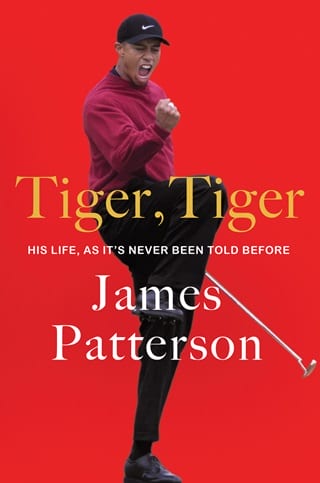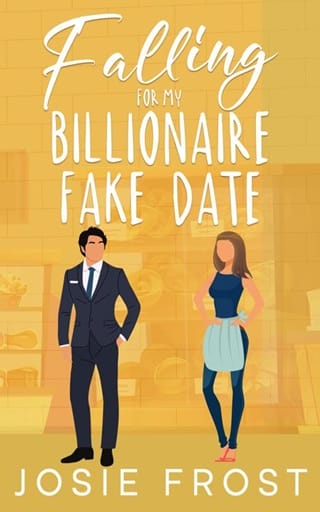PART 4 Superstar Chapter 36
Kennedy Center Concert Hall
Washington, DC
November 9, 1998
If you look at my W [wins] column,” Tiger says more than a year after reworking his swing, “it’s not that great.”
Though he’s finished in the top twenty at every major championship over the last year—including third place at the British Open—Tiger claimed his sole tournament victory in Georgia, at the BellSouth Classic, in May of 1998. On the cover of this year’s Sports Illustrated Masters Preview edition, his picture appeared behind that of a white Bengal tiger alongside the words “After a long dry spell, Tiger says he’s hungry for another Masters win.” That wish did not come true.
“A lot of expectations were placed upon me,” he continues. “My life has changed a lot since I won the Masters… From that point on, it hasn’t been the same. It’s been hard to adjust to.”
Even so, Tiger is number one in the rankings when the 1998 PGA Tour ends, on November 1. A week into the offseason, he and Earl lead off the Nation’s Capital Distinguished Speaker Series before a Kennedy Center audience of two thousand—not the typical golf gallery.
IMG’s Mark McCormack moderates the discussion, presented by the Greater Washington Society of Association Executives. No one in the business-savvy crowd is surprised to see the agency head appearing with its lead client—especially so close to the recent shake-up within IMG’s golf division.
Tiger has “severed his relationship” with agent Hughes Norton, though he plans to remain with IMG.
A headline in the Los Angeles Times last month reads: BEING FIRED IS NORTON’S REWARD FOR MAKING WOODS RICH. The October 16 article highlighted the $120 million in endorsement deals Hughes Norton inked for Tiger since he turned pro, in October of 1996. Tiger “earns more than any other athlete in the world, including Michael Jordan,” Norton said, referring to the golf star’s income from a range of gold-standard brands, including Nike, Titleist, American Express, Rolex, and Wheaties.
“According to sources,” Jaime Diaz of Sports Illustrated says, Tiger “felt he had been overcommitted in business deals, and had lost faith in the direction Norton wanted to take him.”
Or, as Earl puts it, “The decision came down to a fundamental difference. For Hughes, the dollar is almighty. For Tiger, money is not that important. And Hughes underestimated Tiger’s personal growth and his grasp of his own business.”
Tiger chooses Mark Steinberg, a member of the Flyin’ Illini 1989 Final Four basketball team, as his new agent. Steinberg has come up through IMG’s women’s golf division, representing Annika S?renstam of the LPGA.
“We’ll do well together” is Tiger’s assessment. He tells Steinberg, “Always be true to me and tell me what I need to hear, not what I want to hear.”
On one of their first outings together, Steinberg accompanies Tiger to an event in London, where the agent finds himself contending with “thousands of people screaming Tiger’s name, trying to touch him or just trying to see him.”
Just making their way into the back seat of the car is a physical struggle.
“Welcome to my world,” Tiger tells him. “Until you’ve seen it, you can’t possibly understand it.”
At the event in Washington, DC, Tiger jokes that no one is looking for his autograph. “I haven’t been winning. No one knows who I am.” Despite holding the number one world ranking for all but a few weeks since June of 1997, almost a year and a half now, he’s only had that one tour win—the BellSouth Classic—in all of 1998.
He’s undeterred. “I’ve got a very long road ahead of me” is the way he describes his attitude. “I know I’m on the right track, but sometimes it takes longer to show than you’d like.”
Still, fans and sports reporters lament “the new Woods,” who, Sports Illustrated says, “produced a listless defense in the 1998 Masters, finishing six shots behind winner Mark O’Meara in an event he won by 12 strokes the year before.” With “only one PGA Tour victory since July ’97,” and despite remaining “the most consistent high finisher and charismatic figure in the game,” Tiger caused some “to wonder whether his career would turn out to be a major disappointment.”
A string of losses is one reason a player parts ways with his caddie. The 1999 PGA Tour opens with speculation that the relationship between Tiger and Mike “Fluff” Cowan has soured.
Cowan’s the rare caddie to achieve his own celebrity, fueled in part by Tiger’s earlier declaration: “I think Fluff’s the best caddie in the world.”
On January 19, 1999, Cowan is in St. Augustine, Florida, wrapping a national TV spot for the Golf Channel. The script has Cowan greeting visitors to the World Golf Hall of Fame with instructional tips.
Tiger has a tip of his own for Cowan: get glasses. Cowan wears a pair to a tournament, saying, “My man thinks I need them.”
“Is there friction? Yes,” admits Butch Harmon. “They have some issues to work out. But it’s nothing more than what goes on with players and caddies all the time.”
But it may be more significant than that.
The financial arrangements between players and caddies are closely guarded—a weekly subsidy plus a cut of the player’s prize money, up to 10 percent of a championship check.
Two years ago, Sports Illustrated quoted Cowan telling Tiger, “I want ten percent on wins,” four weeks after they started working together, in October of 1996. “And you are gonna win real soon,” the caddie predicted.
A more recent interview Cowan gives to Golf Digest discussing his and Tiger’s current terms is published in the midst of a season when players are pushing back against the traditional pay scale by firing longtime caddies and replacing them with others willing to work for a higher weekly rate and a lower take of winnings.
One top caddie anonymously tells the Washington Post, “A lot of guys are running a little scared, and right now, it’s probably best not to see your name in the paper.”
When Tiger flies to San Diego to play the Buick Invitational at Torrey Pines in early February, Cowan doesn’t make the trip. Instead, Tiger invites his childhood friend Bryon Bell—who’s caddied for him before, most notably when Tiger won his third consecutive U.S. Amateur—to carry his bag. Tiger explains to the New York Times that he was giving Bell a money-earning opportunity to pay his medical school tuition. And on February 14, Tiger delivers, winning the Buick Invitational and its top prize of $486,000.
Bell notes some changes in his friend. “He hits the ball a lot shorter, especially with his irons, and under more control,” Bell tells reporter Jaime Diaz. “But I sensed he had some doubt in his own ability. I’ve never really had to encourage Tiger, but I felt like I had to this week.”
Tiger downplays Bell’s concerns but appreciates his pal’s support. “I respect Bryon more as a friend than as a caddie,” Tiger says. “He knows my game, but more important, he knows me.”
Even more significantly, Tiger is tightening his inner circle.
Two other caddies insist on anonymity when they talk to Golf World about what they saw and overheard at the Nissan Open in Los Angeles the week after the Buick Invitational: Tiger and Cowan spotted in a heated argument. “And I’ll tell you something else,” one of the caddies says. “Tiger did his own yardage book at LA, and when that happens it’s a bad sign for the caddie.” On February 21, Tiger finishes the tournament 12 under par and tied for second.
The Doral-Ryder Open is next on the PGA Tour schedule. Tiger withdraws, looking ahead two weeks to the Bay Hill Invitational. Reporters ask whether Cowan will caddie for him on Arnold Palmer’s course in Orlando.
Tiger gives a short answer. “Probably.”
Thirty-five-year-old New Zealand caddie Steve Williams arrives in Miami for the Doral-Ryder Open. Williams began his career with Greg Norman in the 1980s but has been caddying for Raymond Floyd for the last ten years.
The hotel phone rings. It’s late, around 9:30 p.m., but Williams picks up.
“Tiger Woods here,” a familiar voice says.
Williams is sure it’s his friend Bob, who has a talent for celebrity impressions. He knows that Tiger Woods isn’t even playing in the Doral-Ryder Open. “Look, Bob, I’m tired, give me a ring tomorrow, I’ve just flown in from New Zealand.”
As soon as Williams hangs up, the phone rings again.
Maybe it’s not Bob, Williams thinks.
It isn’t.
Tiger is amused by Williams’s skepticism and considers it a “pretty good start.”
“Steve, I’m looking for a caddie. Are you interested?” Tiger asks. It’s no secret that Tiger and Cowan are splitting up, but Williams is still surprised at the approach. He’s actually been thinking about retiring from caddying next year, had already told Floyd that he’d probably be done in 2000.
That idea is soon jettisoned. He gets off the phone with Tiger with a plan to meet the following day at “dawn-thirty”—a half hour after sunrise—to hit some balls.
“Mike and I are friends, and we will always be friends,” Tiger tells the New York Times on March 3. On March 8, the split is confirmed.
The following week, Steve Williams steps in to caddie for Tiger at the Bay Hill Invitational. But on this first outing together, Williams is hardly impressed by Tiger’s 2-over tie for fifty-sixth or his $5,625 in prize money.
“Mate, I don’t know what all the fuss is about—you’re overrated,” Williams says, trash-talking his new boss when Tiger misses an easy wedge shot on the 13th. “That’s probably the worst shot I’ve seen from a golf professional from that sort of a distance.”
Tiger laughs.
“Tiger, he loved that,” reflects Williams. “He probably used those sorts of comments as motivation.”
Cowan is back on the bag in time to make the 1999 Masters with another pro, Jim Furyk, who’s won five events on the PGA Tour.
“I needed somebody, and he’s the best available,” Furyk says. “I’d have been an idiot not to give Mike a call.”
As for Cowan, he’s not complaining. “I can tell you it’s a lot easier not being around Tiger,” he tells the Washington Post. “I’ve yet to have anyone come up to me and say, ‘Hey, Fluff, can you get me Jim Furyk’s autograph?’”
 Fullepub
Fullepub 



